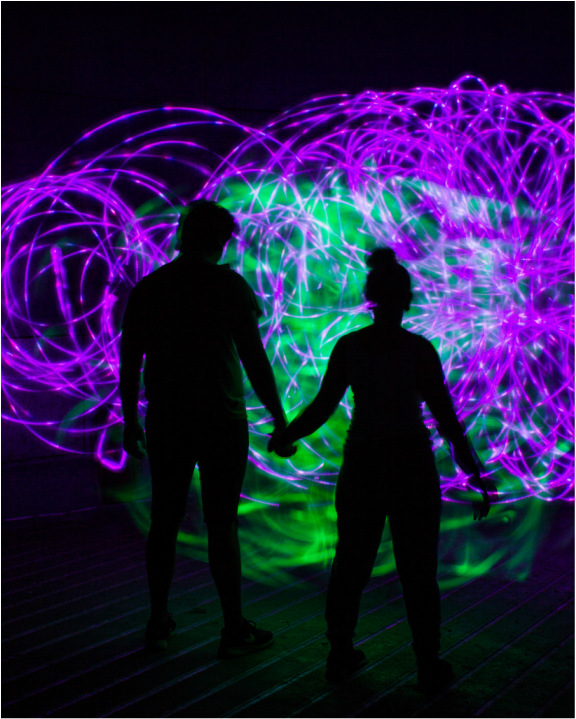It's a common practice in this day and age for couples to cohabitating before marriage. Whether this choice is for your relationship or not will be determined by you. However beware that only 26% of women and 19% of men reported they actually ended up marrying a partner they lived with before marriage. This means the odds are not in your favor in this case. So why do people continue to do this and why does living together result less in marriage than not living together? Let's take a look at some of the reasons that might make you less likely to marry if you live together first.
1) COMMITMENT ISSUES: Cohabitating is actually a really good way to mask commitment problems a person has. By living together you trick yourself or your partner tricks you into thinking that you are committed for the long haul. When actually the cohabitating serves as a "trial and error" period for the relationship. Marriage is not trial and error and does not need to "test" the relationship for compatibility. Marriage is a deliberate choice to be life mates, not just roommates.
2) SEPARATE BUT UNEQUAL: There's usually an absence of joining of responsibilities or life goals when you're cohabitating. So there isn't a mentality of "ours" but rather "mine" and "yours". You're more likely to operate as two separate entities because your needs are as separates. This means that if one of you advances, the other is more likely to feel dis-empowered or left behind. This can create a rift in the relationship and lead you or your partner to look out for your own self interest rather than the interest of the relationship.
3) ROMANCE FIZZLE: One of the great things about dating is having that distance to miss each other. This is where dating actually has a leg up over marriage. However, this advantage will dwindle when you live with your partner because you get used to seeing each other everyday. Finding a way to spark the romance can be stressful on a relationship. While this is something all marriages face, it's harder to face this while you're dating because it can discourage you from moving onto the next step of marriage.
4) IT CAN COVER A BAD RELATIONSHIP: After living with someone for such a time, you have invested time and may have even accumulated things (ie. pets, furniture) that make it hard to leave the relationship. You may also be comfortable in the lifestyle and share the same circle of friends that you might even deny the signs of an unhealthy relationship. At the same time, you may be hesitant to move the relationship forward. So you end up being unhappy and staying longer than you really should in a bad relationship.
5) ALL THE RISKS WITHOUT THE BENEFITS: Cohabitating will test your relationship financially, romantically, and morally like what a marriage goes through. Except through your trials, there is little assurance that your partner will be fighting on your side since there's always an easy exit for the relationship. Cohabitating is often seen as a temporary choice and serves the here and now. Whereas in a marriage, these trials allow your relationship to grow since marriage is seen as a permanent decision.
1) COMMITMENT ISSUES: Cohabitating is actually a really good way to mask commitment problems a person has. By living together you trick yourself or your partner tricks you into thinking that you are committed for the long haul. When actually the cohabitating serves as a "trial and error" period for the relationship. Marriage is not trial and error and does not need to "test" the relationship for compatibility. Marriage is a deliberate choice to be life mates, not just roommates.
2) SEPARATE BUT UNEQUAL: There's usually an absence of joining of responsibilities or life goals when you're cohabitating. So there isn't a mentality of "ours" but rather "mine" and "yours". You're more likely to operate as two separate entities because your needs are as separates. This means that if one of you advances, the other is more likely to feel dis-empowered or left behind. This can create a rift in the relationship and lead you or your partner to look out for your own self interest rather than the interest of the relationship.
3) ROMANCE FIZZLE: One of the great things about dating is having that distance to miss each other. This is where dating actually has a leg up over marriage. However, this advantage will dwindle when you live with your partner because you get used to seeing each other everyday. Finding a way to spark the romance can be stressful on a relationship. While this is something all marriages face, it's harder to face this while you're dating because it can discourage you from moving onto the next step of marriage.
4) IT CAN COVER A BAD RELATIONSHIP: After living with someone for such a time, you have invested time and may have even accumulated things (ie. pets, furniture) that make it hard to leave the relationship. You may also be comfortable in the lifestyle and share the same circle of friends that you might even deny the signs of an unhealthy relationship. At the same time, you may be hesitant to move the relationship forward. So you end up being unhappy and staying longer than you really should in a bad relationship.
5) ALL THE RISKS WITHOUT THE BENEFITS: Cohabitating will test your relationship financially, romantically, and morally like what a marriage goes through. Except through your trials, there is little assurance that your partner will be fighting on your side since there's always an easy exit for the relationship. Cohabitating is often seen as a temporary choice and serves the here and now. Whereas in a marriage, these trials allow your relationship to grow since marriage is seen as a permanent decision.


 RSS Feed
RSS Feed
